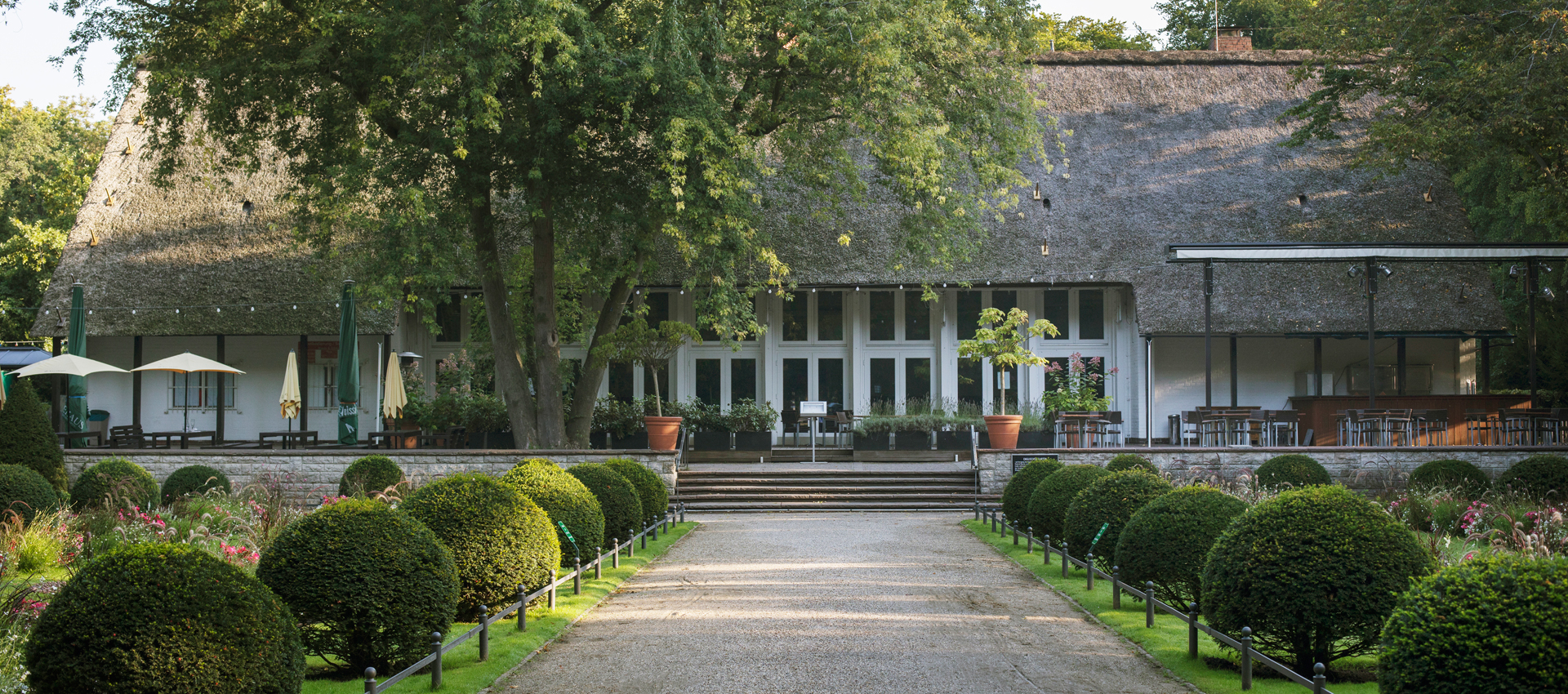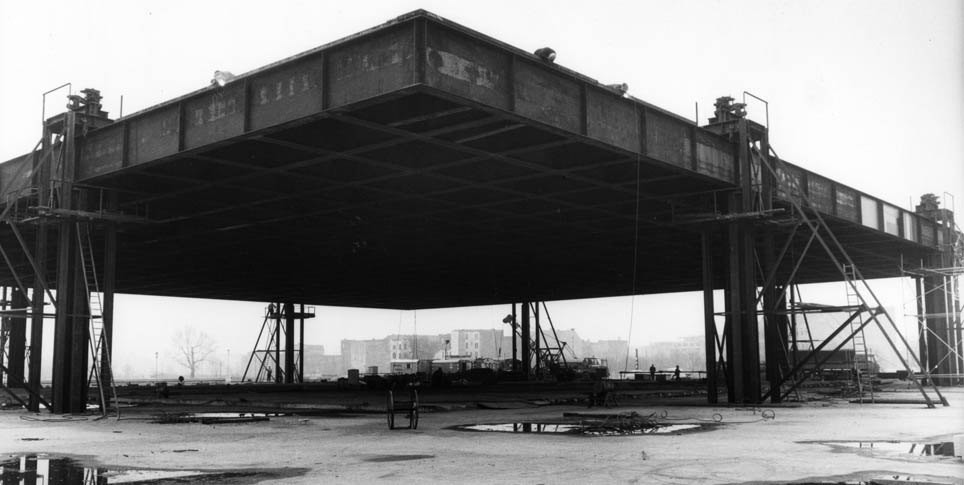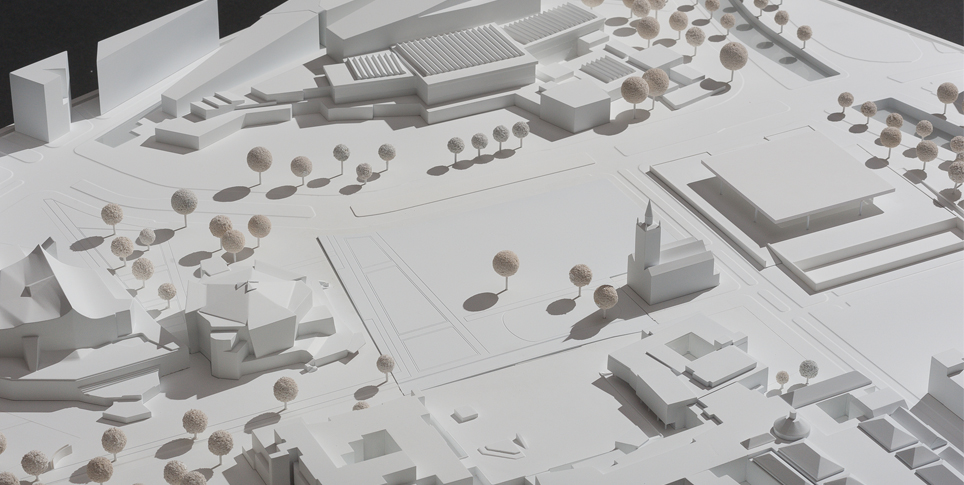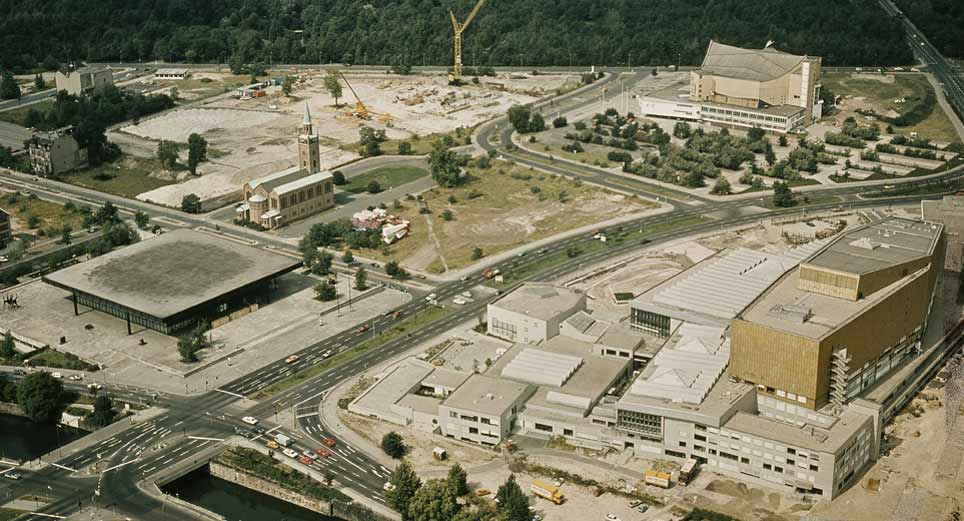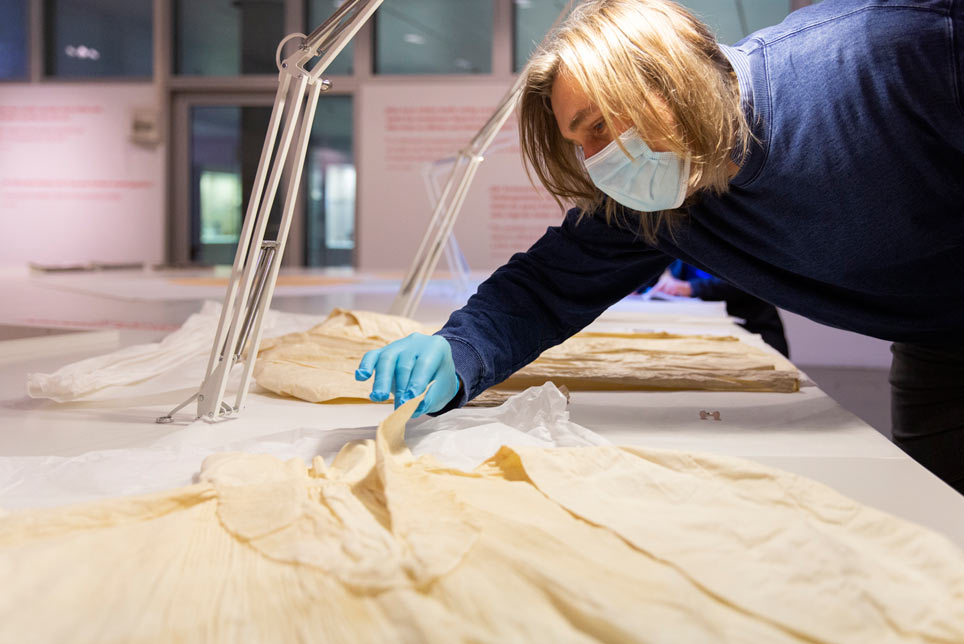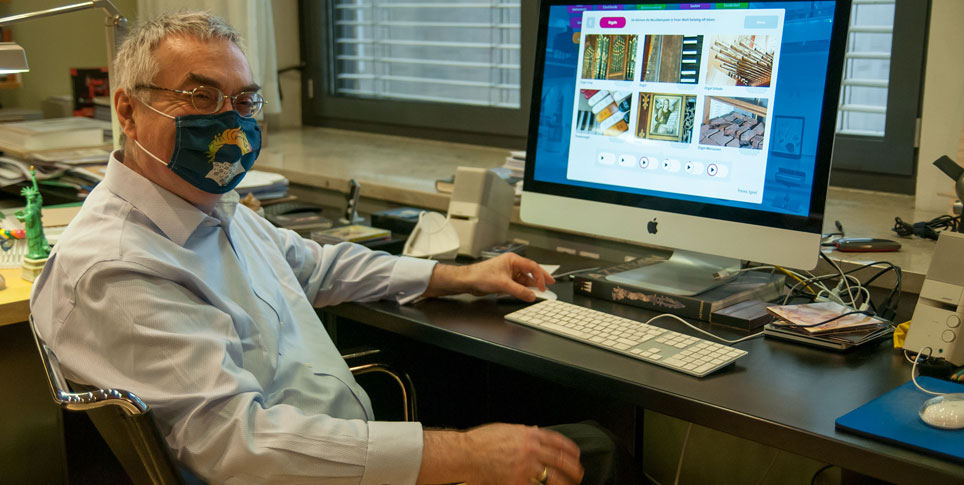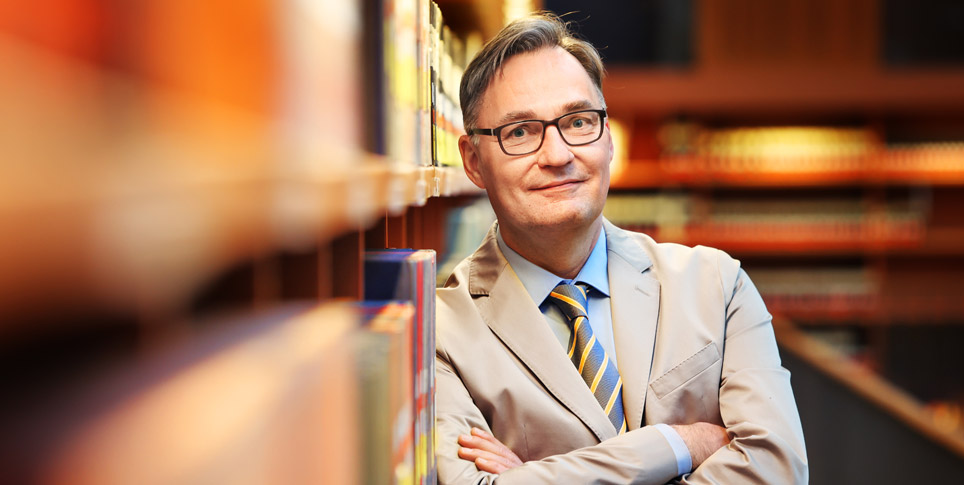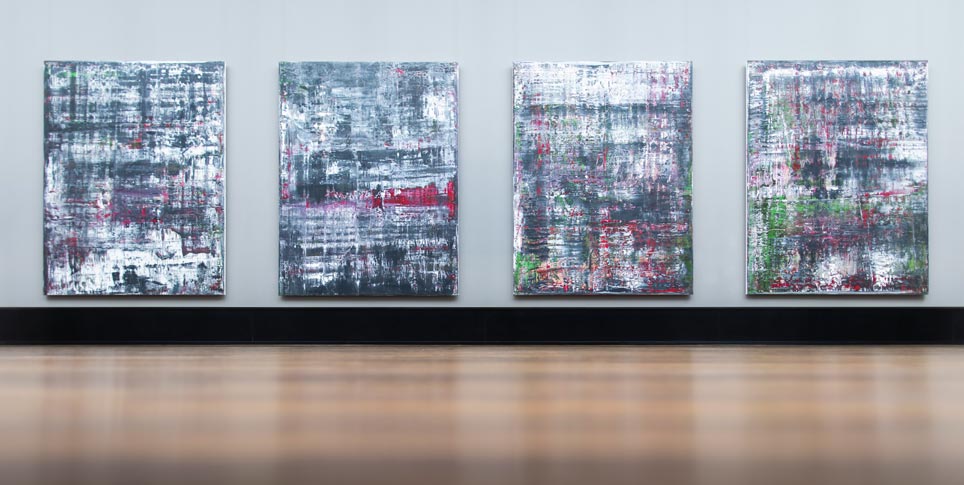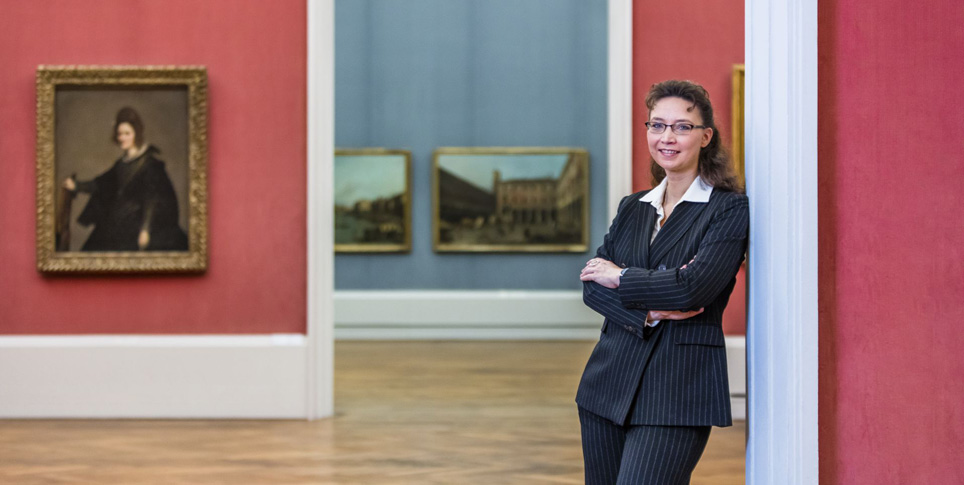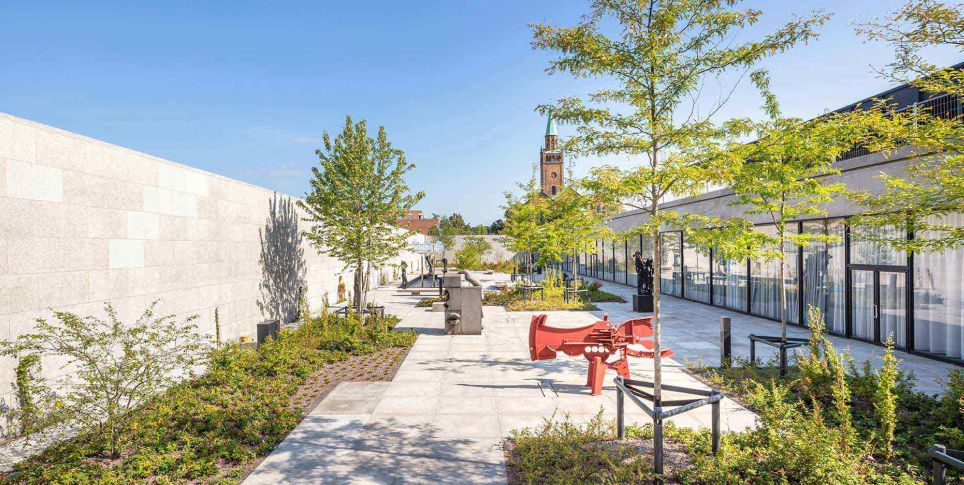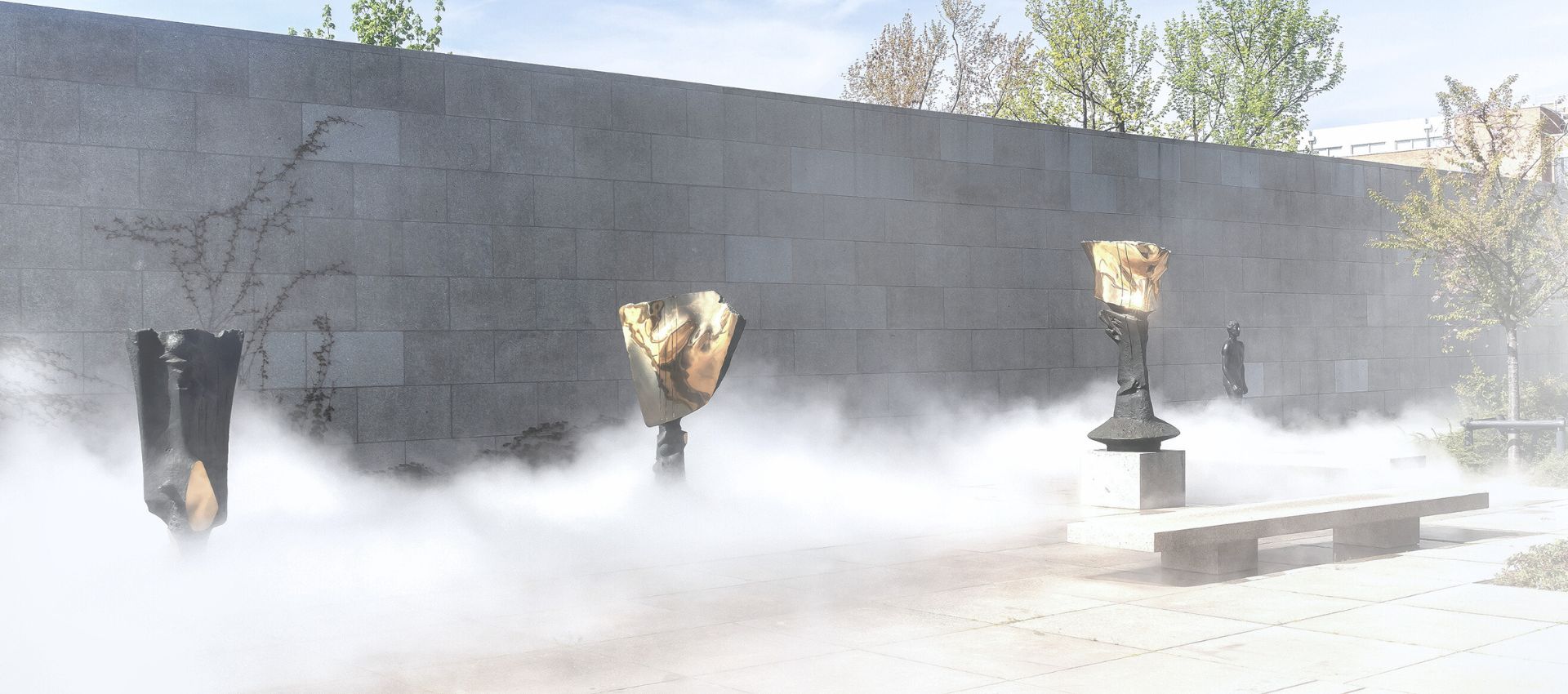If you wanted to see modern art in the early 20th century, you went to the Tiergarten quarter. Read on to explore the traces of those bygone days.
The ultra-thin human figure appears to stand on its head like a yoga instructor, perfectly vertical, with its skull sunk halfway into the floor and its toes extended toward the sky. Is this some sort of Icarus whose wings melted over Potsdamer Platz and crashed head-first into the ground? The six-meter-high bronze sculpture was erected at the train station under Potsdamer Platz in 2008. It occupies an intermediate level at the northern entrance, lending the half-enclosed glass pavilion the aura of an art gallery. At the base of the sculpture is a quote translated into four languages: "It seems to me ridiculous to say, that nothing exists beyond the sky. / There is no single world, no single earth, / no single sun: there are many worlds, as many / as the radiant lights we see around us." These lines were written by the poet and philosopher Giordano Bruno, who was burned at the stake for heresy in Rome in the year 1600.

Berliners used to scoff at the art salon of Bruno and Paul Cassirer. "From Monet and Manet to money," they sneered. Today, an aura of impressionism still lingers. © Christoph Mack
This slender bronze created by sculptor and stage designer Alexander Polzin has a powerful physical presence; it creates a counterpoint to the chilly high-rise architecture of post-unification Berlin and it seems to say – you have to stick your head deep in the sand here to find the real subject of your narrative.
Beneath the pavement of the Potsdamer Platz neighborhood and the nearby Kulturforum lies a landscape dotted with historical locations where modern art was once created, exhibited and sold. But given how thoroughly their traces have been erased since the Second World War, you would need to have the gift of supernatural vision to spot them. In the prewar era, Potsdamer Straße, Bellevuestraße and Viktoriastraße (which no longer exists) formed a charmed triangle of the art trade. This was where people experienced the avant-garde, before the avant-garde moved into the museums.
If you wanted to see modern art in the early 20th century, you would go to Potsdamer Platz and wander along the neighboring streets with your eyes open. The first thing you would have encountered was the terrace of Café Josty. It was located where the gleaming stars of the Boulevards der Stars now lie, in the median strip of the new Potsdamer Straße. In 1929, art critic Paul Westheim described it this way: "How the streams of traffic roar up to you from all sides, the electric trams, the automobiles, the people rushing ever forwards as if driven by a whip; how it all constantly tangles up and then unravels again, swells and recedes; how it surges and drifts and floods and never wears itself out." For many artists, he wrote, this sight was "like half an hour spent at the beach, like the ebb and flow of the tide, and just as calming for the nerves..." Franz Kafka, Käthe Kollwitz and George Grosz, for example, all sat in the Josty and soaked up this modern Berlin vibe.
In 1923, the magazine Der Querschnitt (literally "the cross section"), founded by art dealer Alfred Flechtheim, brought it "to the attention of the international art trade that in November, [we] will open Galerie Grosz in the Meistersaal building, Köthenerstrasse No. 38, in Berlin W. 9. George Grosz has made the entirety of his work available. Sales will be organized via the permanent exhibition in our rooms as well as through dispatch services and exhibitions in Germany and abroad." The Meistersaal building is the only prewar exhibition venue at Potsdamer Platz that has survived. There is an information panel that describes its heritage and shows photographs of the Malik publishing house bookshop, which also opened in 1923. The shop window displays were designed by John Heartfield, whose politically themed art regularly caused a commotion on the sidewalk.
One of the very first German women to enter the art trade was Mathilde Rabl, who opened her gallery in 1897 at Potsdamer Straße 134c. The address is legendary, because it was here, in an inexpensive attic apartment, that Theodor Fontane wrote his celebrated late novels and spent his last days in 1898. Today, Joseph-von-Eichendorff-Gasse leads into Alte Potsdamer Straße at precisely this point. The location is marked with a commemorative plaque for Fontane at one of the new buildings designed by Renzo Piano. In 1918, Ferdinand Möller, an art dealer who operated one of the city’s major galleries, expanded his space into the gallery owned by Mathilde Rabl after she died. The painters Erich Heckel, Otto Mueller and Karl Schmidt-Rottluff – all members of the Brücke artists collective – were closely associated with Galerie Möller. In 1927, they moved to rooms in Schöneberger Ufer 38, where they exhibited works by Klee, Feininger and Kandinsky. In 1938, Möller and several other art dealers were tasked with finding foreign buyers for art works confiscated and labelled "degenerate" by the Nazis, which ultimately saved more than a few works from destruction.
Two buildings further on, Herwarth Walden operated a gallery named Sturm (meaning “storm”). From 1913 to 1928, he dedicated the space to promoting the latest art of the expressionist generation. Walden also founded a magazine of the same name, and its editorial office was located in this building, too. The magazine published pieces by major German writers, including Else Lasker-Schüler, Gottfried Benn and Alfred Döblin. Before moving to this location, Walden had rented out a condemned building at Tiergartenstraße 34a. He created a furor there in 1912 by hosting a touring exhibition by the Blaue Reiter group and presenting works by Italian futurists. Today, the Sturm archive is kept by the Staatsbibliothek (Berlin State Library).
The Staatsbibliothek’s new building was designed by Hans Scharoun and erected directly on top of the original Potsdamer Straße during the era of the Berlin Wall. The street was rerouted around the building to the north. The remaining, eastward section of the road was then renamed Alte Potsdamer Straße. The redevelopment of this area in the decade after reunification retained the course of this stretch of road. Viktoriastraße, on the other hand, has disappeared entirely. The only remaining point of reference for the location of this street is the London plane tree (known locally as the Kaiserplatane) not far from the main entrance of the Staatsbibliothek. The new Potsdamer Straße, laid out west of the Staatsbibliothek, bends respectfully around the hearty tree. In former days, this was the spot where Viktoriastraße crossed Margaretenstraße. It was an exclusive residential district, and if you looked toward the Tiergarten, you were facing the direction of the old Kemperplatz.
In 1898, an art salon was opened by two cousins, Bruno and Paul Cassirer, at roughly the spot where the Musikinstrumenten-Museum (Museum of Musical Instruments) now stands, which was Viktoriastraße 35. The Cassirers helped bring the French impressionists to a wide audience, although some Berliners took an unflattering view of the business model. "From Monet and Manet to money," they sneered. In 1899, the artists who formed the Berlin Secession appointed the Cassirers as general managers of the group. They were responsible for planning the spectacular gallery it would use at Kantstraße 12 in Charlottenburg. Later, in the years 1928 to 1930, the Secession held exhibitions at Tiergartenstraße 21a, where the Italian embassy stands today.
Alongside the London plane, the spire of St. Matthew's Church is the only landmark at the Kulturforum that helps a visitor imagine how things looked a hundred years ago. The church was built between 1844 and 1846 to a design by Friedrich August Stüler. The poet Gottfried Keller was carried away with the sober Prussian elegance of the little church and penned these verses in response: "As though it were made to order, / Delicate and sweet the temple, / To any eager young builder / A model and an example!" It was known as the "polka church," because the Berliners liked to amuse themselves in the pubs nearby, at the edge of the Tiergarten. Around it, there developed the first middle-class residential neighborhood at the former periphery of Berlin, just beyond Potsdamer Tor (the Potsdam Gate, part of the old Berlin Customs Wall).
The facade of Villa Parey at Sigismundstraße 4a, which was scarred by wartime shrapnel and never restored, gives you a feeling of the proportions of the former residential area. The villa originally stood in the way of plans for the new Gemäldegalerie building at the Kulturforum. The prospect of its demolition led to protests, and it was then integrated into one flank of the museum building, which opened in 1998. We can be grateful today that it’s still there. It gives us a clearer idea of one of the important patrons of the arts in Berlin, Eduard Arnhold, who lived there until his death in 1925. And we can more easily imagine Adolph Menzel, who worked in Sigismundstraße 3 for thirty years until his death in 1905 – in a "grand building with a high rent," as the painter wrote indignantly to his landlord, when the plaster fell from the rear wall in front of his studio windows.
At Tiergartenstraße 15, you can put a face to one of the people who lived in this exclusive residential quarter. James Simon gazes down benevolently at joggers and passersby from a commemorative plaque mounted on the smooth facade of the new building for the Representation of the State of Baden-Württemberg. Beneath the bronze relief is an inscription that honors the "patron, benefactor, patriot and Jewish cosmopolitan" who lived here until 1927 and donated so many artistic treasures to Berlin’s museums, including the bust of Nefertiti.
In 1938, after the Nazis had harassed, robbed and expelled the art dealers and collectors stigmatized as "non-Aryan," dozens of residential buildings at the site of today's Kulturforum were torn down. Room had to be made for the Germania fantasies of Adolf Hitler and his chief architect Albert Speer. The Second World War left an expanse of ruins near the sector border. Here, in the 1960s, the West Berlin authorities planned and built sensational cultural buildings like the Philharmonie, the Neue Nationalgalerie, the Staatliches Institut für Musikforschung (State Institute for Music Research) with its Musikinstrumenten-Museum, and the Staatsbibliothek. But the dream of a lively Kulturforum remained unfulfilled, even after reunification.
It wasn't until 1968, with the opening of the Neue Nationalgalerie, that the tradition of exhibiting modern art in the Tiergarten quarter had a permanent home again. The project forged a link to prewar Berlin for its designer too, the architect Ludwig Mies van der Rohe: from 1915 until he immigrated to the United States in 1938, his office had been located on the other side of the Landwehr Canal.
Now, work on the Museum des 20. Jahrhunderts (Museum of the 20th Century) is well under way at the large construction site in the middle of the Kulturforum. It signals the availability, in the near future, of more space for exhibiting collections that have only grown more extensive over the years. When the construction hoardings around the site are eventually dismantled, they will reveal a building with two public boulevards that cross in the middle. In a way, that represents an inversion of the historical situation. In the past, this was a place where people strolled through the streets of a flourishing European city to see art. In the future, the new museum building is expected to give urban life a boost at the Kulturforum. Then the area will live up to its name and become a place where people love to stroll, meet and spend time.
